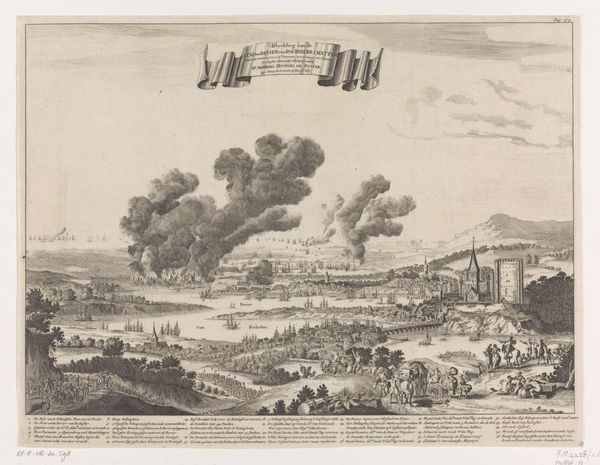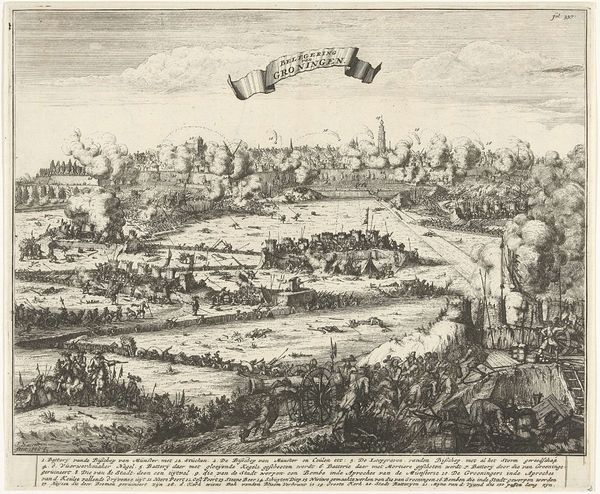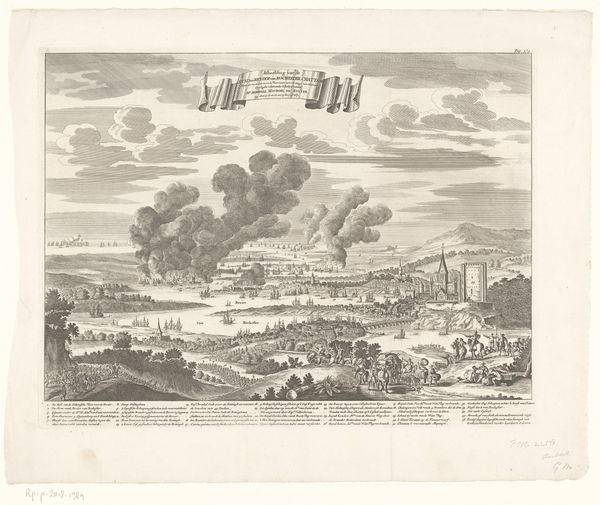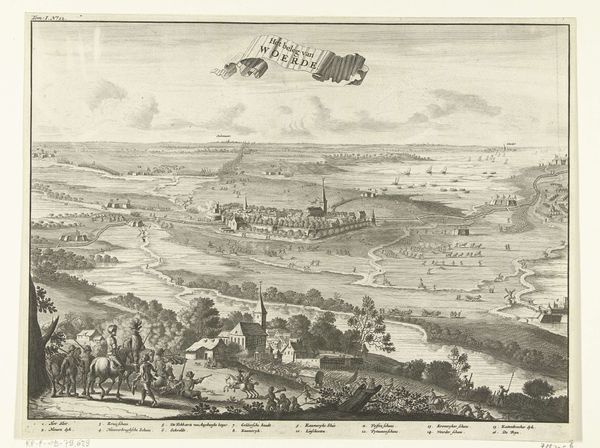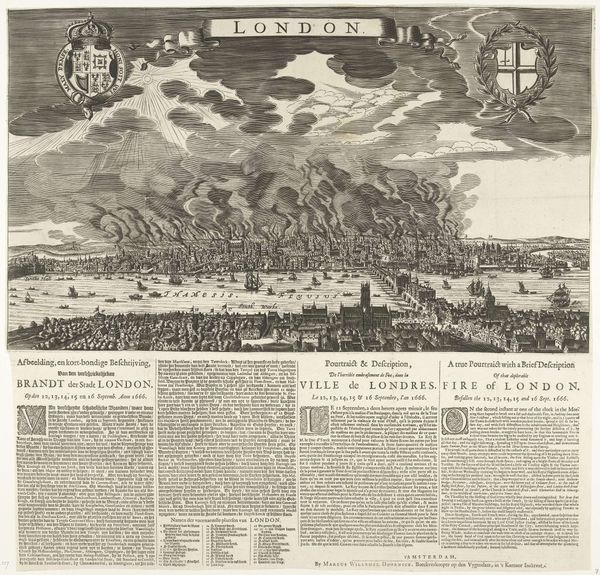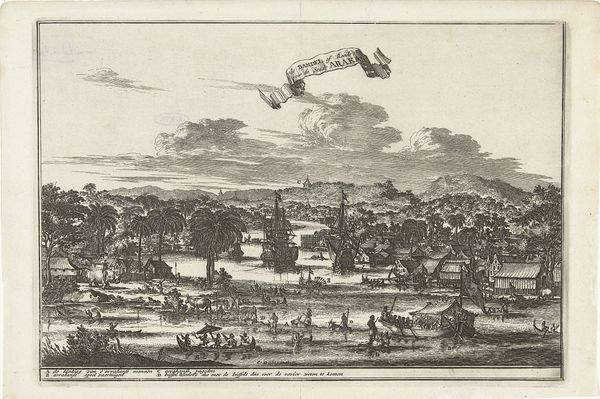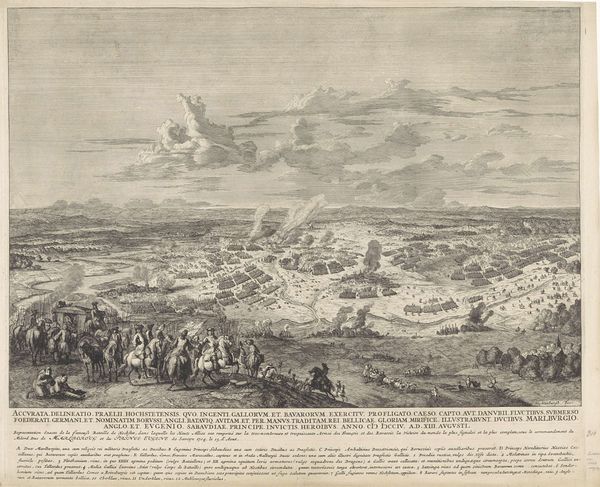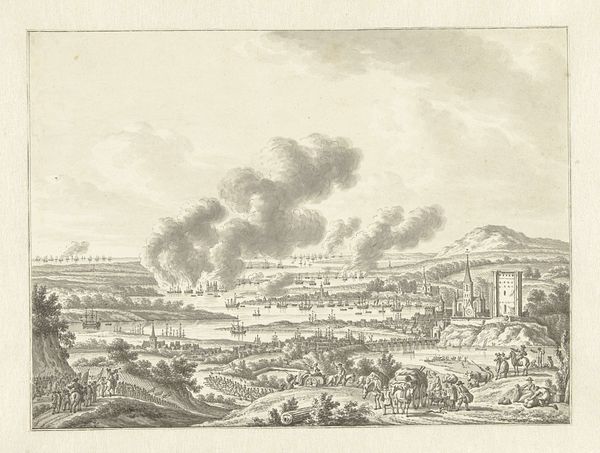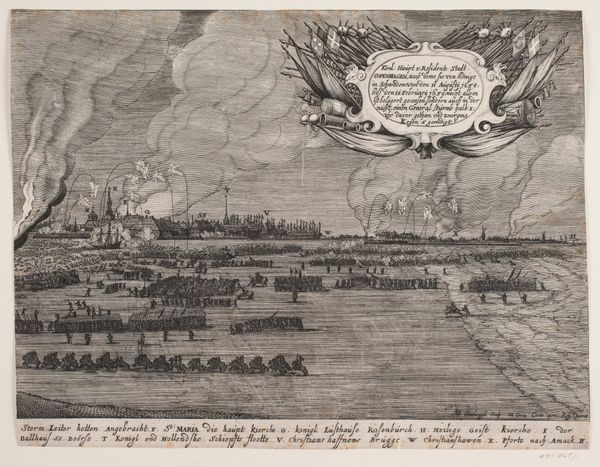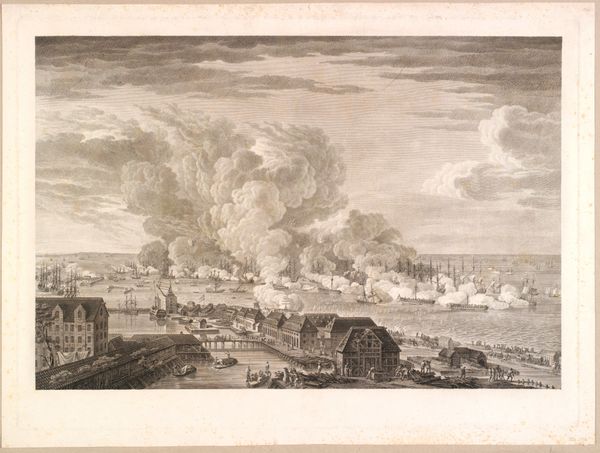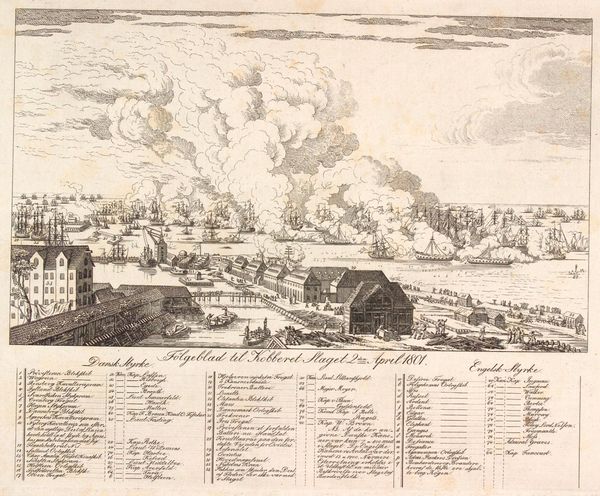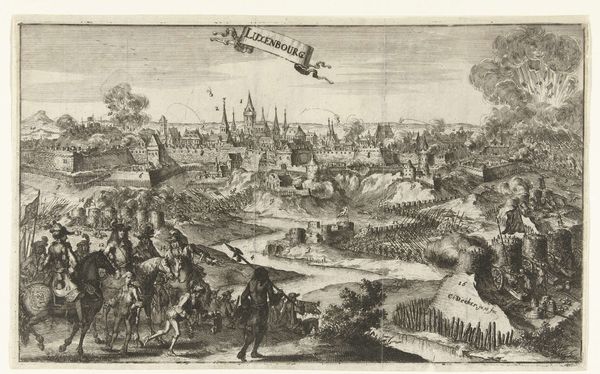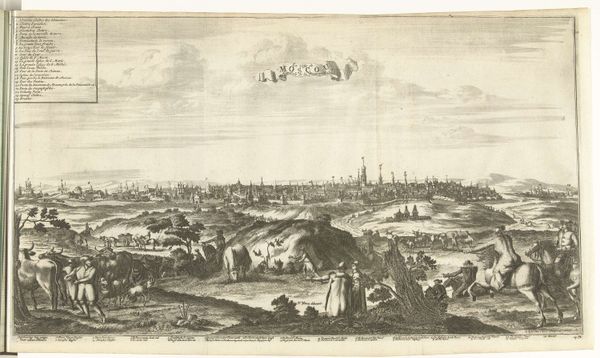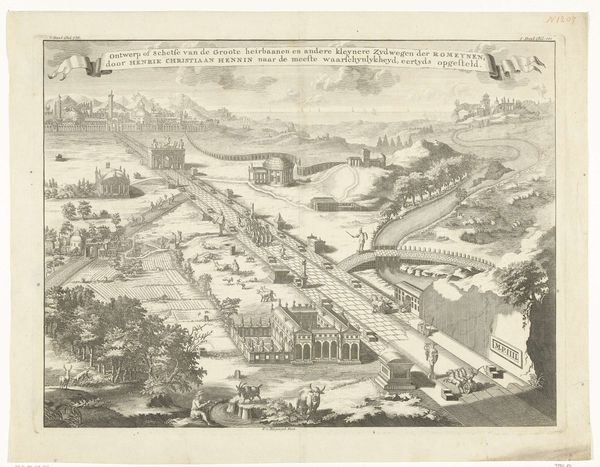
print, engraving
#
baroque
# print
#
landscape
#
history-painting
#
engraving
Dimensions: height 266 mm, width 350 mm
Copyright: Rijks Museum: Open Domain
Curator: Standing before us is "The Dutch Raid on the Medway, 1667," an engraving by Bastiaen Stopendael, dating from between 1685 and 1687. It’s currently housed in the Rijksmuseum. What strikes you first about this piece? Editor: Immediately, I'm drawn to the smoke plumes billowing against what is otherwise a rather orderly landscape. It presents such a stark juxtaposition—chaos erupting within a scene meticulously rendered, almost clinically observed. Curator: Precisely. The engraving exemplifies the Baroque period, with its detailed and dramatic depiction of this pivotal historical event. Look at the use of line to create depth and perspective, guiding the viewer's eye across the landscape towards the focal point of destruction. Editor: But it's the physical process that fascinates me most here. The labor-intensive act of engraving these fine lines into the metal plate, creating a reproducible image of war—a commodity almost. What was Stopendael’s involvement beyond this reproductive practice? Did he witness this event firsthand, and what were his patrons demanding in terms of realism? Curator: The print translates historical narrative into a symbolic visual form. The billowing smoke, the regimented ranks of soldiers, even the floating banner, they aren't merely representational; they signify the broader themes of conflict and national identity. Editor: Right, and that conflict, transformed into a commodity circulated throughout Dutch society! I think of the printers, the paper-makers, the distributors, each relying on conflict as a form of making money—an intricate dance between making war and artwork. Curator: Indeed. And consider the detail employed. Look at the meticulous rendering of ships and architectural details of the cities. The engraver has gone to some length in replicating visual accuracy to highlight key elements of that naval contest. Editor: Ultimately, what is powerful here is seeing how material and labor convert historical trauma into art. An etching renders the raid, not just an image but a complex network that challenges any easy separation between high art and commercial enterprise. Curator: Yes, by attending to this work’s formal design and composition, it allows one to contemplate its inherent capacity for visually ordering violence. Editor: And, likewise, reflecting on the production reminds us of all who are inevitably caught up in war economies far beyond the battlefield.
Comments
No comments
Be the first to comment and join the conversation on the ultimate creative platform.
